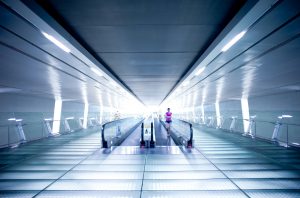Southeast Asian leaders have discussed the creation of a regional “travel corridor” during regional summit meetings, in a bid to drag the region’s economy out of its pandemic-induced slump.
While the move has yet to be officially announced, Indonesian President Joko “Jokowi” Widodo said in a statement that leaders from the Association of Southeast Asian Nations (ASEAN) had discussed the plan during online meetings on November 12.
Jokowi said that the 10-nation bloc was set to issue an “ASEAN declaration on an ASEAN travel corridor arrangement framework.” He added that the corridor, which would involve the coordination and streamlining of strict regional health protocols, would be up and running by the first quarter of 2021. “The people cannot wait much longer, they want to see our region revive,” he said.
If implemented, the plan would build on the bilateral travel lanes that have recently been established between various ASEAN countries and nations outside the region.
Singapore has led the way with its clutch of “green lane” arrangements with countries within and outside the region. Last month, Singapore and Indonesia agreed to set up a “reciprocal green lane” – or RGL, in ASEAN’s acronym-clotted jargon – for essential business and official travel between the two countries.
Singapore and Hong Kong have also agreement to establish a bilateral air travel bubble that will come into effect on November 22, exempting travelers from quarantine or stay-at-home requirements. The city-state has concluded similar arrangements with Brunei, Malaysia, China, and Japan.
A regional travel bubble idea would be important for Indonesia, which is currently struggling with the largest coronavirus outbreak in Southeast Asia. As of November 12, the country had recorded 452,291 infections and 14,933 deaths, the highest in the region. This month, the country entered recession for the first time since the Asian financial crisis of 1997-98, after recording two successive quarters of economic shrinkage.
Most other Southeast Asian nations are also facing prolonged economic downturns due to COVID-19, which, like the 1997-98 crash, could soon begin to catalyze political instability. “Enabling movement of people in the region will help drive economic growth,” Malaysian Prime Minister Muhyiddin Yassin said at the summit meeting. “Essential movement through travel corridors must be given priority, such as a coordinated set of procedures and requirements between member states.”
Regional integration and mobility has been key to Southeast Asia’s rapid growth over the past three decades, and has been among the most productive areas of endeavor for ASEAN. In 2015, the bloc established the ASEAN Economic Community, as a vehicle for driving forward regional economic integration and leveraging the region’s $2.6 trillion economy. Increasing regional mobility was perhaps best encapsulated by the rise of the Malaysian budget carrier AirAsia, which had become a ubiquitous player in regional travel but has since been pummeled by the COVID-19-induced travel halt.
The travel corridor plan raises hopes that economic activity will resume in Southeast Asia in the foreseeable future, but the early 2021 timeline seems overly optimistic. As in so many domains, ASEAN is likely to face significant challenges from wide divergences between its 10 member states.
In some nations – particularly Indonesia and the Philippines – the COVID-19 pandemic continues to rage, while nations like Thailand, Singapore, and Vietnam have largely fought the contagion to a standstill. This ensures that in the best case scenario, the arrangements will proceed in a patchy manner, until a reliable coronavirus vaccine has been made widely available.
Despite the evident challenges, COVID-19 recovery is one area in which ASEAN can make good on its long-time ambition of integration and harmonization.

































